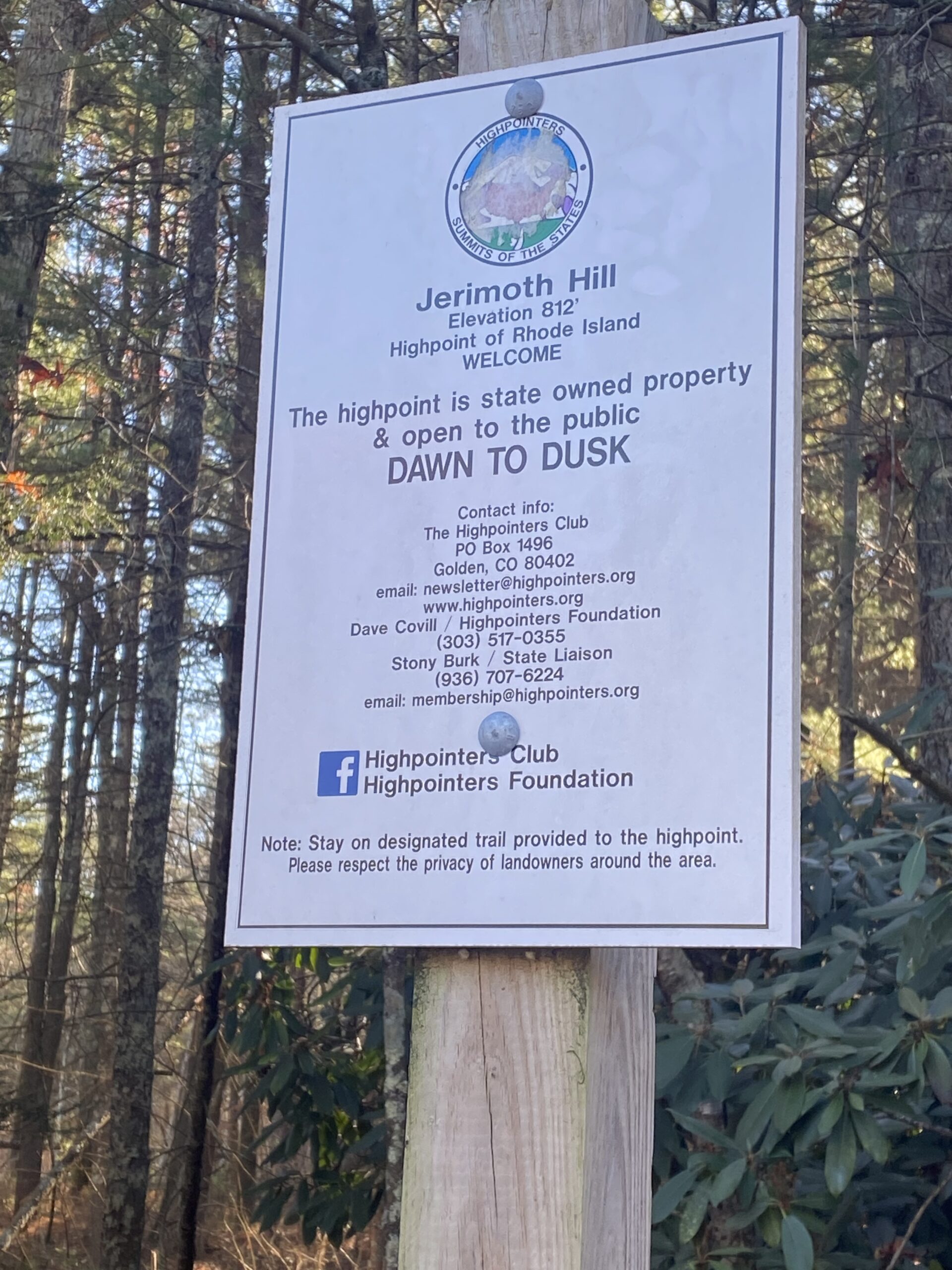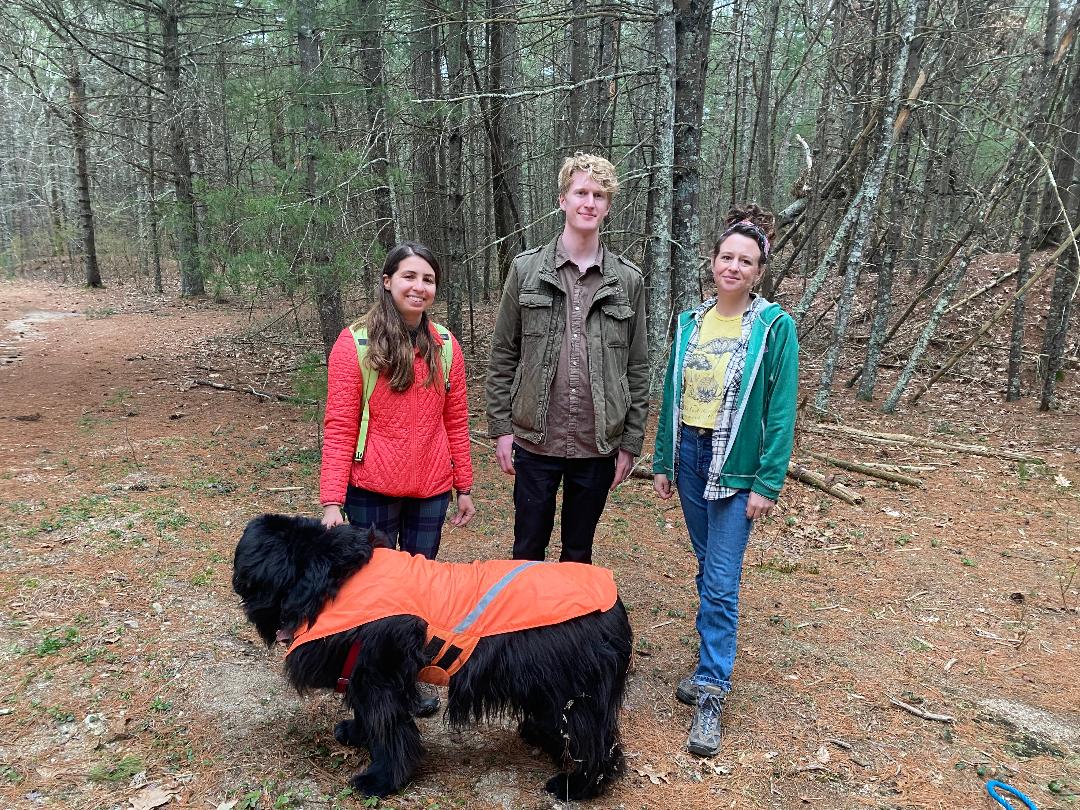Jerimoth Hill: Smallest State’s Highest Point
November 20, 2023

FOSTER, R.I. — In the woods here just before the Connecticut border, on top of a hill off Route 101, sits the state’s highest point, Jerimoth Hill.
There’s a small stone-and-metal marker near the site, which is the lowest state high point in New England, at 812 feet. Walk by too quickly and you’ll miss it, though — my sister and I passed it twice before a kind Boy Scout leader from Hopkinton, Mass., showed us where to find it, in the woods off the trail about a third of a mile from Route 101.
Beyond the marker, the trail ends in a clearing with a rocky outcrop — the actual highest point in the state — and two outbuildings. On the late fall day we visited, the Massachusetts Boy Scout troop’s members were learning how to start a campfire, and as we approached them, one of the Scouts gleefully shouted “fire!” when it was successfully lit.
Jerimoth Hill is named after Jerimoth Brown, an early settler of Rhode Island, and the property was donated in 1938 to Brown University by Walter Raymond Turner, a member of Brown’s Class of 1911. The university built a small observatory on the site, which has a clear view of the night skies without light pollution.

Although it’s a short stroll from Route 101 to the high point, it was once considered as inaccessible as Mount Everest, thanks to Henry Richardson, whose land hikers had to cross to access the site. Brown University owned the actual high point until 2014, when the state purchased the summit. At first, according to records, Richardson welcomed hikers, letting them cross his property without asking permission. But eventually, after a deluge of hikers in the 1990s, when highpointing gained popularity, his good will was abused by break-ins and other damage, and he did an about-face, plastering his property with no trespassing signs and installing motion detectors. He was also known to threaten hikers on his land.
Roger Rowlett, chairman of the Highpointers Club in the 2000s, defended Richardson’s right to protect his land in a blog post in July 2001 on the club’s website titled “A Tribute to Henry Richardson — Protector of Jerimoth Hill.”
Rowlett wrote, “It’s an axiom that you learn something about each state when you visit its highpoint. The lesson on Rhode Island is that private property is private and the owner has the right to protect it. … Henry had every right — even had an obligation — to defend his property. His stubborn determination actually made Jerimoth an interesting destination as it raised a buzz.”
Dave Covill, a member of the Highpointers Club, tried for years to get Richardson to allow hikers to cross his land, and was finally successful in 1998 — but hikers were only allowed access to the site on five national holidays each year, according to the club’s website. This continued until 2005, when the property was sold after Richardson’s death in 2001.
But even that limited amount of visitation had a bonus, Rowlett wrote. “Henry still tried to accommodate the dedicated highpointers by permitting access on Sunday of 3-day holidays. These visits have become fun, mini Highpointers conventions. People from all over the world visit.”
The new owners, Jeff and Deb Mosley, immediately allowed the Highpointers Club to make a new trail and add new signage for the site. The change in access was celebrated by the club: “The building of a new [trail] and new signage is a sea change in visitation to the summit which had been severely restricted by the previous owners in which visitations were restricted to five holiday weekends a year,” according to a post on the club’s website. The Mosleys were also awarded a Certificate of Appreciation from the club.
The site is now accessible from 8 a.m.-4 p.m. year-round. There is parking on the shoulder of Route 101 on both sides of the road.



